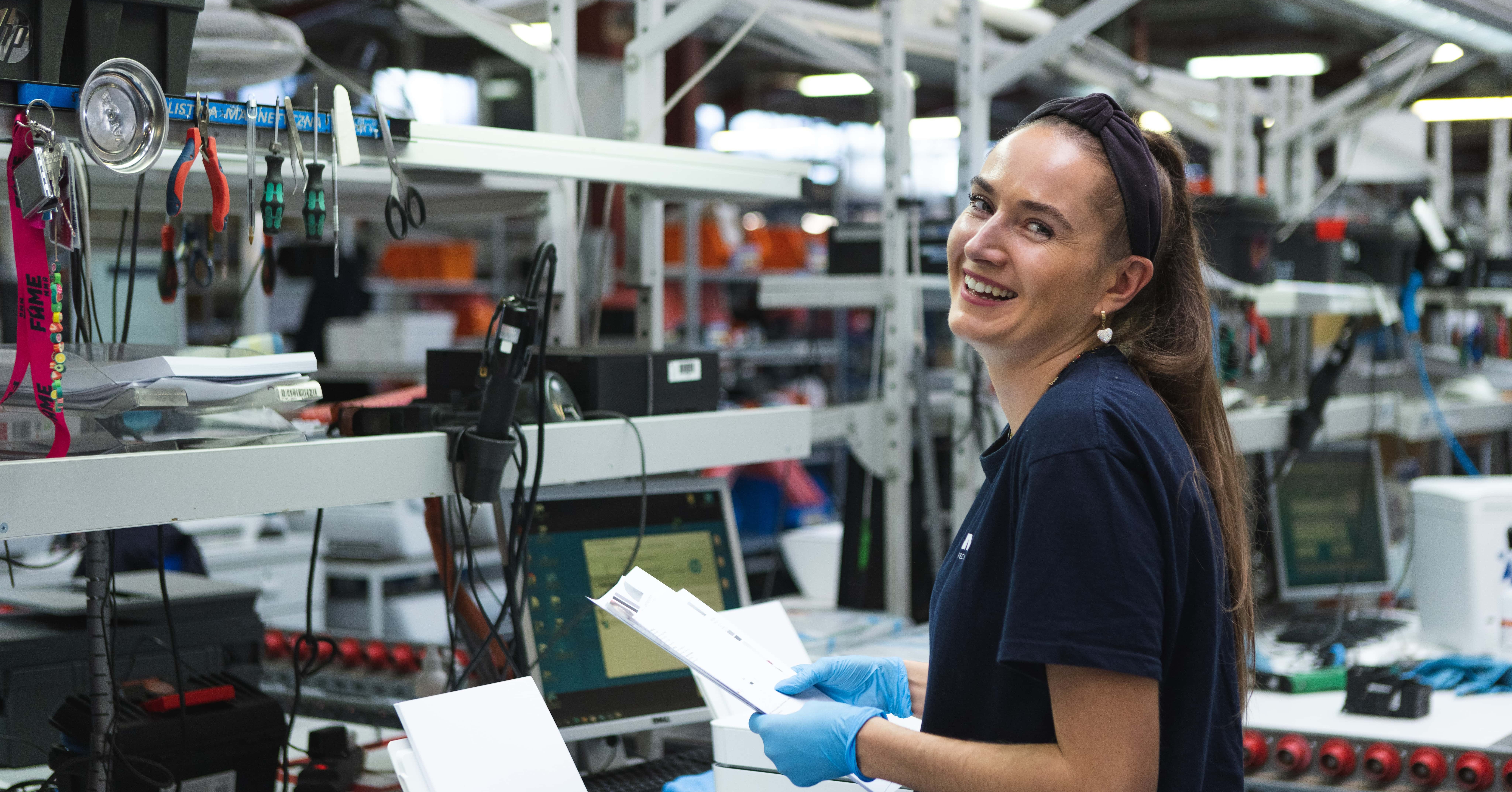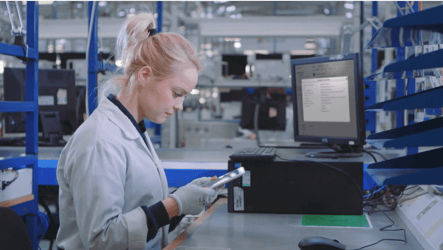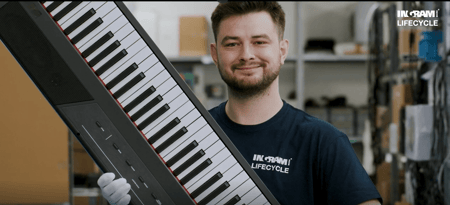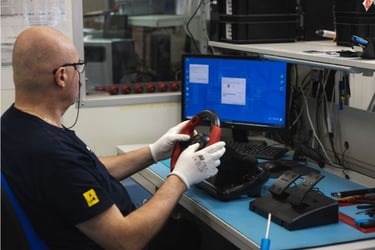Are you struggling to see the full impact of returns management, recovery, and recommerce within your reverse logistics?
Introducing these elements efficiently into your reverse workflow can benefit your business in many ways.
Ingram Micro Lifecycle offers a truly comprehensive end-to-end reverse logistics solution for high-end consumer electronics, IT and mobility assets, and small domestic appliances. Through innovation, we enable a circular economy for our customers’ technology through lifecycle extension.
In the article below, we highlight the various positive impacts that engaging in high-quality returns management, recovery, and recommerce programs can have on your business.
Impact on the Bottom Line
When developing an effective reverse logistics process that harnesses all these elements, efficiency is key. Slow processing increases the risk of depreciation. This reduces value recovery, creating the need for potential cost write-offs. Processing no products at all removes the opportunity for value return.
Returns Management
Fraudulent returns from opportunists (intentionally or unintentionally) can be a big issue for you to combat. Regularly review your returns policies for loopholes that these opportunists can exploit. Verify that products fall under the terms of the warranty when completing repairs, exchanges, or refunds.
Deploy returns avoidance methodology. You can provide remote user support for self-diagnosis or repair. This is particularly important for in-person assessments, in-store for example where a customer may seek a return. In-store staff may not have the knowledge or experience to assess whether a product return falls under the warranty terms.
Utilizing the knowledge and expertise of a returns partner can bolster this level of user support. Through training, a returns partner can provide the extra awareness needed for returns handlers to make informed decisions. Failing to do so can lead to dissatisfied customers or loss of profits.
Processing accuracy is important in exchanges or refunds to ensure these aren't based on poor results. Expenditure on unnecessary repairs, refunds, or exchanges can hit your profits. Issue customer refunds or credit where they’re truly due.
Recovery
Only invest in recovery services for products that genuinely need them. Product assessment is key in determining the level of repairs and refurbishment required. Knowledgeable processes grade and route products for the most appropriate course of action.
Efficient and effective quality assurance tests ensure high-standard recovery processes. Failing to meet a set requirement can lead to products needing a second round of recovery processes. This increases the cost of the services and reduces profit.
The more time it takes to restore the quality and functions of a product, the greater the costs. It is much more cost-effective to get the quality of a product right the first time around. If products fail quality assurance tests, check the recovery process for areas of improvement.
Root cause analysis or trends in consumer-reported faults can improve manufacturing. Your influence with this information can tighten quality control to cut defects. Use this information to affect future product or packaging development.
Recommerce
While you must work quickly to limit the impact of depreciation, you mustn’t compromise the quality. Failing to work efficiently may mean wasted time, effort, and resources, hitting you financially. It can also lead to dissatisfied customers – not only your end users but also others in the supply chain if you’re supplying low-quality goods.
Depreciation impacts products before, during, and after recovery processes. This includes returned products as well as ones you've invested in for repair and refurbishment. Getting products back out for use fast ensures your investment doesn't suffer. You can recover the highest value at the peak time.
Selling products has come a long way since storing inventories on spreadsheets. You should maintain live inventories with unique identifiers, grades, and values. Use effective selling tools, such as dealer and reseller portals. These will boost your reach to a wider network where you'll gain the most value return for your used products.
As mentioned before, making your products available on the secondary market can introduce your range to new customers. This is a segment of the market that can't afford your product brand new. They may buy second-hand now but it creates the environment where they’re more likely to buy new from you in the future.
Recommerce increases the opportunities for potential customers to buy from you. This gives you a competitive edge and boosts your profits both in the short term and the long term.
Environmental Implications
These activities support the shift from a linear economy to a circular one. Over time, we’ve become accustomed to the linear approach. This takes resources, makes products, and then wastes them when we no longer need them.
The circular economy sees the lifecycle extended through repair and refurbishment. The same user may keep the product, or ownership may move to another person. Circularity takes preloved products and makes them reloved. The process repeats until it’s no longer financially or functionally viable.
Minimizing e-waste is one of the most significant positive impacts of these activities. Eventually, the useful life of a product becomes impossible to extend. Recycling of non-usable components keeps associated hazards out of informal waste and landfills. Parts harvesting keeps components in use for as long as possible while they have a function. Repair and refurbishing can use these donor parts instead of newly manufactured ones.
Extending product lifecycles decreases the demand for brand-new products. This eases pressure on manufacturers for new products. In turn, this reduces the mining and processing of raw materials. As production volume decreases, so too does the associated CO2 emissions.
Harvesting of naturally occurring metals and minerals drops, lowering the environmental impacts of manufacturing. Choosing a refurbished piece of technology can avoid up to 87% of the resource and emissions impacts.
Detailing these activities within sustainability reports shows progress towards ESG and CSR objectives. Transparency in these areas is important for stakeholders, investors, and your customers. Each of these groups seeks an increasing understanding of how businesses are improving sustainability.
Enhancing Customer Satisfaction and Loyalty
These processes can strengthen customer relationships, boost brand image, and increase peer referrals.
Swift processing of returned products reduces the time customers are without their products. The shorter the customer downtime, the better the experience for them. This includes same-unit repairs and exchanges, if dependent on the assessment outcome.
Speed is also important to customers when the outcome is a refund. Customers want to be without their products and any money owed for as little time as possible. Getting a fast positive outcome for them will improve their satisfaction. A customer will be dissatisfied if they feel misled through the process, because of speed or outcome.
Consumers are becoming more eco-conscious and are more actively seeking businesses that are transparent about their sustainability efforts. People with environmental concerns over the impacts of their technology use will choose businesses that show more eco-friendly practices. Avoid greenwashing. The repercussions of exaggerating your environmental efforts will backfire and damage your reputation.
Recommerce is a gateway for second-life products to enter the market. These products are an attractive option for consumers where affordability is a barrier to new purchases. Customer satisfaction increases as they can enjoy the benefits of your products without cost concerns.
Revitalize your returns management, recovery, and recommerce
Recovering value from your unwanted technology, advancing towards the sustainability goals of your business, and improving user satisfaction are all benefits of streamlining and improving these triple-R processes.
Working with Ingram Micro Lifecycle will provide a wealth of experience from our technicians, industry insight, and forward-thinking agility to improve your reverse logistics activities. We support many customers around the globe, enabling a circular economy and extending lifecycles of electronic assets.
Get in touch with us today to find out more about how we can help you improve the efficiency of your technology products.













